We use a variety of scanning equipment to capture high quality digital images without harming the original materials. The cameras and scanners are managed by UNC-Chapel Hill’s Wilson Special Collection Library’s Digital Production Center. For more information on the digitization specifications we use, please visit Digitization Guidelines.
Cameras
Phase One Book Scanner [iXG Reprographic Cameras with DT BC100 Dual Camera Book Cradle Solution]
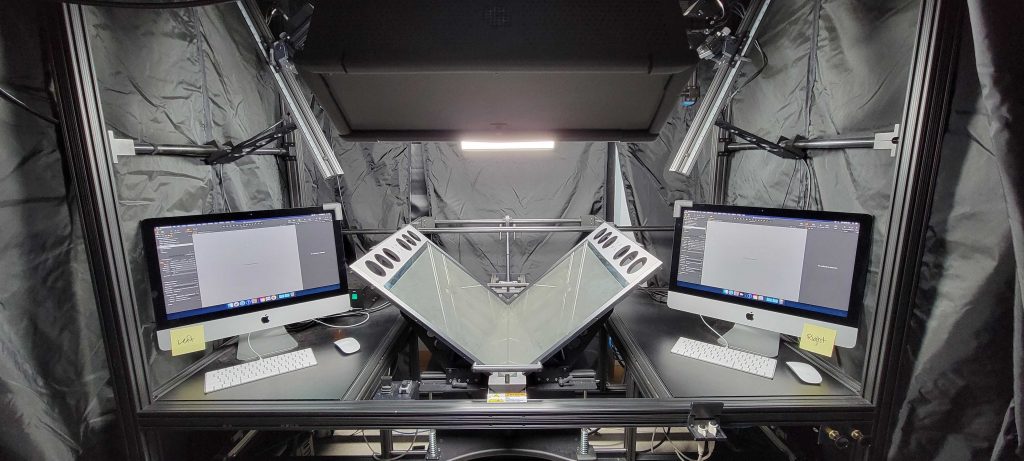
The Phase One book scanner is designed for mass digitization of books and a variety of other bound materials. The scanner has two 100MP resolution cameras which shoot the left and right side of the materials. In addition, it features a 100° bonded V-shaped anti-reflective glass platen which is powered by an air compressor and controlled by foot pedals. The glass gently comes down and secures the material to help get the best possible image. The cradle can be adjusted to fit various bound materials up to an A2 size, manipulated to accommodate larger spines, and moved horizontally or vertically to better capture images.
Example of materials photographed by the PhaseOne Book Scanner:
Atom Scanner [with Sony Alpha 7R IV and Sony FE 50mm f/2.8 Macro Lens]
The Atom, similar to the Phase One, is a table-top digitization platform that is adaptable to various material types. It works with a lens and a digital back to capture high quality images of smaller materials (up to 25 5/8” by 23 3/16”) such as photographs, theater programs, and documents. Although the Center currently has only the standard reflective top, the top is able to be switched out for other accessory tops if needed. The camera, a Sony Alpha 7R IV with a Sony FE 50mm f/2.8 Macro lens, is attached to a column which is used to position the camera at a certain height to capture scans at a specific DPI. It utilizes the Capture One software.
Phase One [iXG Reprographic Camera System with DT Versa Reprographic Capture Cradle]
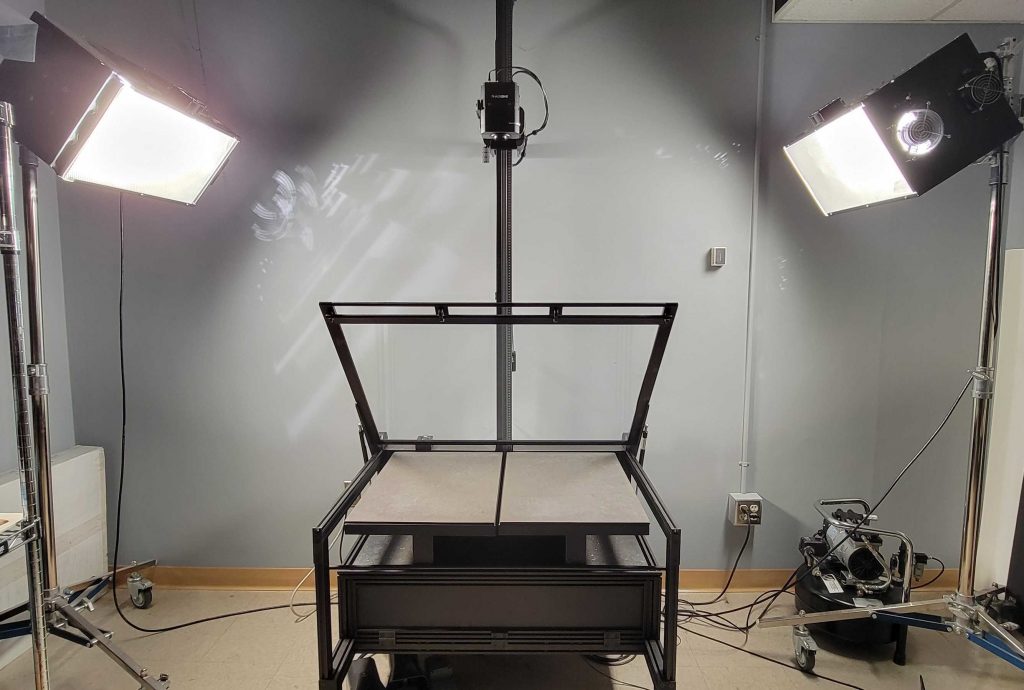
The Phase One works with a lens and a digital back to capture high quality images of materials that are too large or fragile for a flatbed scanner, such as newspapers, scrapbooks, and framed items. Items as large as 3’x5′ can be scanned on the Phase One. The camera, a 100mp iXG, is attached to a motorized column which is used to position the camera at a certain height to capture scans at a specific dpi. The cradle includes a built-in pressurized 180° dual glass platen that adjusts to the thickness of the material. The materials sit on plates which gently push the materials against the glass platen using pedals powered by an air compressor. These plates can be adjusted to leave space for materials that cannot be completely flattened. It utilizes the Capture One software.
Example of materials photographed by the PhaseOne:
Hasselblad H6D-100c
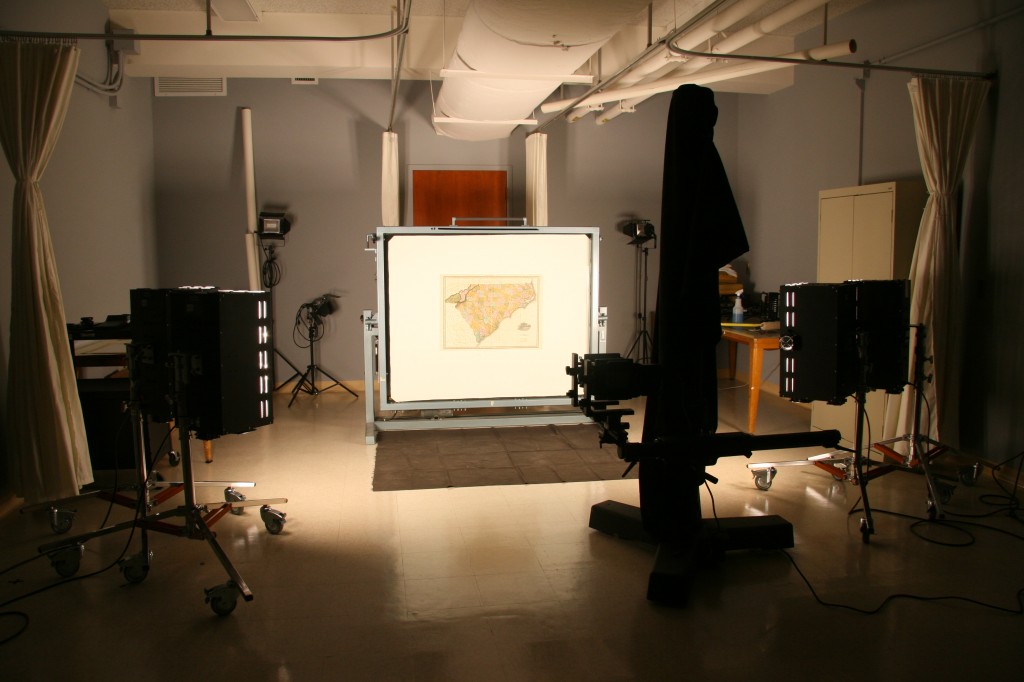
The Hasselblad H6D-100c with a 120 lens is used to shoot large format materials such as maps, drawings, and posters. The camera is 100 megapixels, allowing incredible levels of details even on very large maps and drawings and uses Hasselblad’s Phocus software. Many over-sized, flat items are held in place during digitization with a 4’x5′ Teaneck upright vacuum table.
Example of materials photographed with the Hasselblad H6D-100c:
Nikon D700
The Nikon D700 is a full-frame digital single-lens reflex (DSLR) camera and uses a 12.1 megapixel FX-format CMOS sensor. Adobe Bridge and Photoshop are the software products used with the camera. The Nikon D700 is used to photograph objects such as clothing, stuffed animals and other 3D objects that are included in Digital NC.
Example of materials photographed by the Nikon D700:
Scanning Equipment
Epson Expression 10000XL
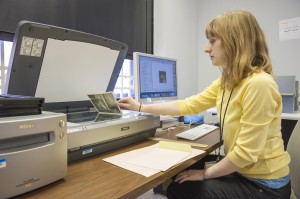
Epson 10000XL flatbed scanners with transparency adapters allow for the digitization of flat reflective and transparency materials. 2400 pixel per inch optical resolution can produce 24- or 48-bit RGB files or Grayscale files. Used primarily for photographic print originals where high-resolution, high-quality image captures are required. Also used extensively for digitizing sheet film originals, such as 4×5, 5×7, and 8×10 sheet negatives as well as glass plate negatives. The Epson 10000XL works with the Silverfast Software.
Examples of materials scanned on the Epson Expression 10000XL:
Hasselblad Flextight X5
The Flextight X5 scanner by Hasselblad is used to scan slides. The scanner allows for up to 50 slides to be scanned in a single session with little supervision needed. In addition to standard 35mm slides, the Flextight can handle various sizes of negatives as well. The Flextight scanner works with the FlexColor software.
Example of materials scanned on the Flextight:
Fujitsu 5900 Sheet-Feed Scanner [fi-5900C]
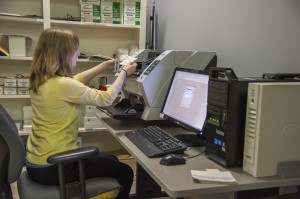
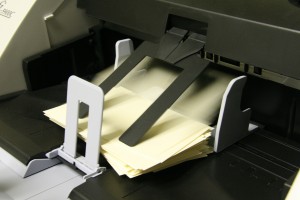
High-volume production scanner provides fast (120 pages per minute, simplex ~ 240 images per minute, duplex), high-resolution image capture from uniform sized unbound materials. Can digitize original material from business card size up to 11×17. The Fujitsu utilizes the ScandAllPro software and has multiple output format options for both color and black & white images.
Example of materials scanned on the Fujitsu 5900:
Fujitsu 7600 Sheet-Feed Scanner [fi-7600]
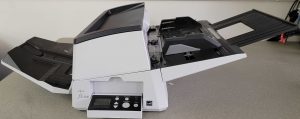
The Fujitsu fi-7600 is a high-volume production scanner that can scan a plethora of unbound document types of various thicknesses including plastic cards, envelopes, long page documents. It has the capability to scan over 100 pages per minute (simplex) or 200 images per minute (duplex). Like the Fujitsu fi-5900C, it utilizes ScandAllPro and has multiple output format options for both color and black and white images.
Example of materials scanned on the Fujitsu 7600:
Internet Archive Scribe Book Scanner
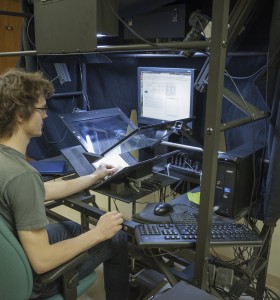
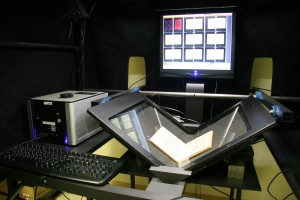
Provides high-speed, high-quality mass digitization techniques for bound materials. The scanners can produce approximately 3,000 digitized pages of original text per day. Digitized materials are hosted on the Internet Archive Web site and are fully available for download in multiple formats.
Example of materials scanned on the Scribe Book Scanner:
Zeutschel 12000C Overhead Color Scanner [OS12000]
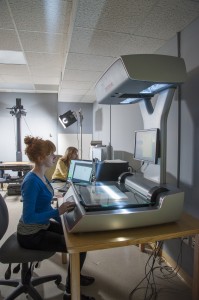
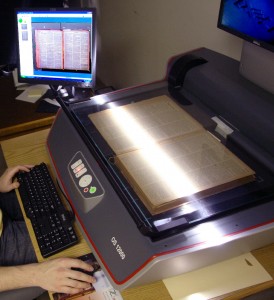
High-speed/high-resolution overhead scanning system, designed specifically to allow for digital capture of books, manuscripts, and fragile documents with minimal handling and fast image capture times. Completes a 300 pixel per inch 24-bit RGB capture in approximately 5 seconds. Allows for multiple file format image delivery and utilizes the OmniScan software.
Example of materials scanned on the Zeutschel 12000C:
Zeutschel Q1 Overhead Scanner [OS Q1 with Extended Bed]
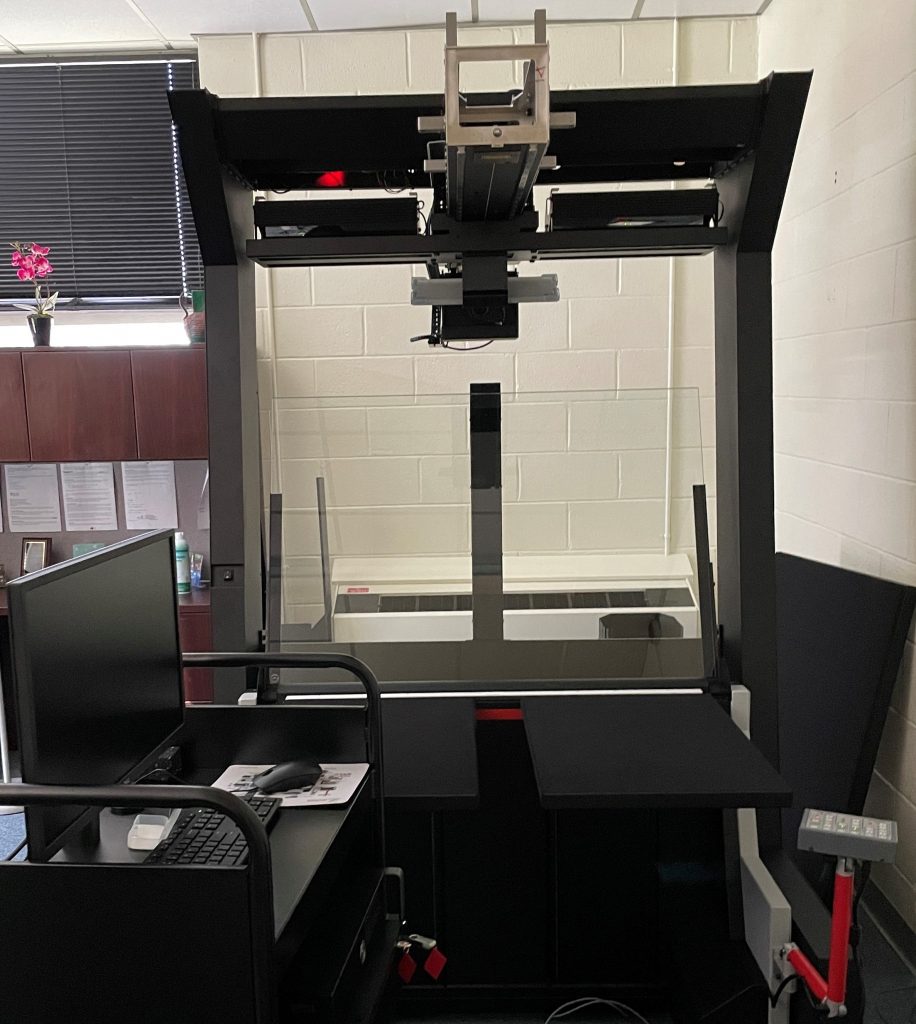
The OS Q1 is a high-quality overhead scanner system that is used to digitize materials that are large, fragile, and/or bulky. In addition to producing high-quality scans, the OS Q1 features fast image capture times. It can scan A1 size materials at 600dpi in less than 8 seconds. Utilizing the OmniScan software, scans can be output into multiple file formats. This scanner is currently being used only at our satellite location at Elizabeth City State University.
Example of materials scanned on the Zeutschel OS Q1:
Audiovisual Transfer Equipment
Audiovisual materials are converted by staff members of the Digital Production Center located within Wilson Special Collections Library. A full list of equipment is available here.
Some of the equipment featured on this page was purchased using funds from the Institute of Museum and Library Services under the provisions of the federal Library Services and Technology Act as administered by the State Library of North Carolina, a division of the Department of Natural and Cultural Resources.